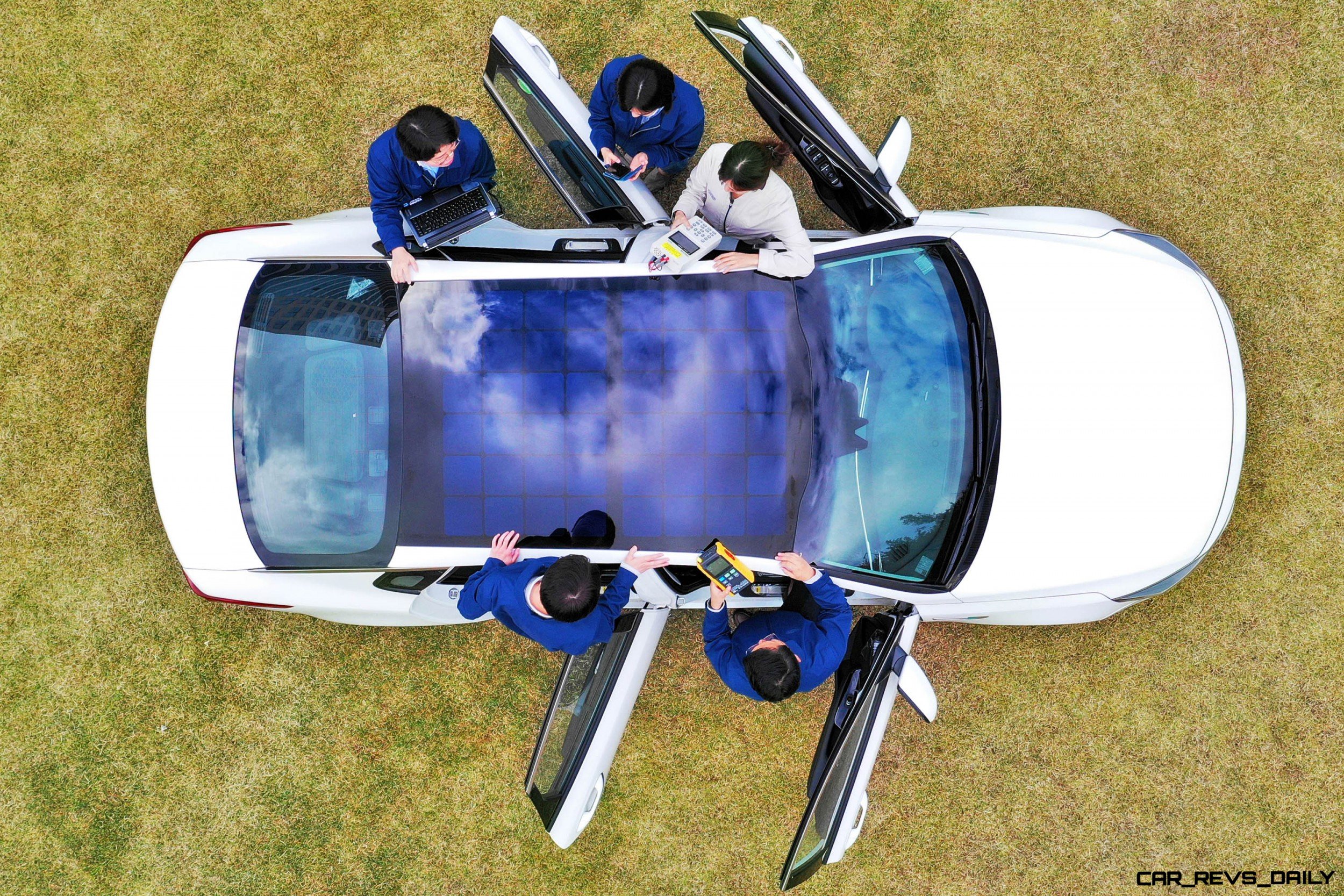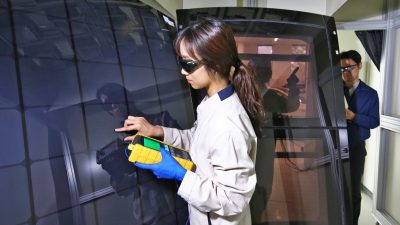Once limited to experimental vehicles and ultra luxury hybrids, roof mounted solar panels are seeing a resurgence as EVs slowly become a more focal piece of the automotive landscape. Hyundai and Kia aim to take them to production reality by unveiling their plans to put them on production cars in a move that could have big ramifications for the broader automotive market as a whole.
Of course, a key caveat is that they will not be on all production vehicles, with Hyundai and Kia claiming that only “selected vehicles” will be able to be outfitted with them. When the panels eventually arrive on the scene, they will play two key roles depending on the vehicle they are equipped to. For example when outfitted to an electric vehicle like the Ioniq, they will help charge the battery during driving in a fashion that is similar to a cell phone being plugged into a portable charger. This could help resolve the range issues that many EV buyers experience due to a charging infrastructure that is still in its infancy stages, and has not achieved widespread availability like gasoline. The use of solar energy would also boost the green image of these vehicles, and look for that to resonate nicely with green buyers that want more planet saving technology for their buck.
When outfitted to a conventional vehicle, their role changes, and the panels can help improve electrical effiency for certain accessories while reducing electricity demands from the battery at the same time. This in turn can help improve fuel economy slightly for equipped vehicles. For the moment, the first generation panel system is limited to only hybrids with traditional roof layouts, but the second gen semi-transparent variant would greatly expand its availability to all cars due to it being part of a panoramic sunroof feature. Meanwhile, the third generation of panels add units mounted on the hood, and can draw power from both the roof and the hood panels at the same time for enhanced efficiency. Neither company revealed extensive details beyond that, but it is suspected that this particular layout would again be limited to EVs only.
Both companies claim that the panels are very effective at what they do, with the first gen units capable of recharging 30 to 60 percent of a hybrid’s battery power per day depending on the enviroment and the weather. At first glance, it does not seem that spectacular of a development, but as mentioned before, there are some distinct advantages that make themselves apparent when in real world use especially in long distance driving, as well as rigorous city commutes.
“In the future, various types of electricity-generating technologies, including the solar charging system, will be connected to vehicles,” said Jeong-Gil Park, executive vice president of engineering design at Hyundai Motor Group. “This will enable them to develop from a passive device that consumes energy to a solution that actively generates energy. The paradigm of the vehicle owner will shift from that of a consumer to an energy prosumer.”
Both of the Korean car brands revealed that the technology will not be on production cars until “after 2019” but the system could become commonplace among automakers if it is proven to be a sucessful venture. To date solar vehicle charging technology has mainly been used for light duty applications, for example cooling off the interior or slowly trickle charging a traditional battery. Prior versions of more extensive charging systems often forced buyers to pay a higher price tag for a relatively modest gain in performance. A notable example is the Fisker Karma and its revived counterpart the Karma Revero. Both of these models use a solar roof system, but lump in a hefty price tag for the privilege of using it.
If Hyundai and Kia can make a solid business case for installing this feature, even a modest gain in efficiency could help breathe new life into solar panels as a charging solution, and we look forward to seeing what Hyundai and Kia can do with the selected vehicles, especially in their growing lineup of SUV and CUV vehicles.

Carl Malek has been an automotive journalist for over 10 years. First starting out as a freelance photographer before making the transition to writing during college, his work has appeared on numerous automotive forums as well as websites such as Autoshopper.com.
Carl is also a big fan of British vehicles with the bulk of his devotion going to the Morgan Motor Company as well as offerings from Lotus, MG, and Caterham. When he is not writing about automobiles, Carl enjoys spending time with his family and friends in the Metro Detroit area, as well as spending time with his adorable pets.



